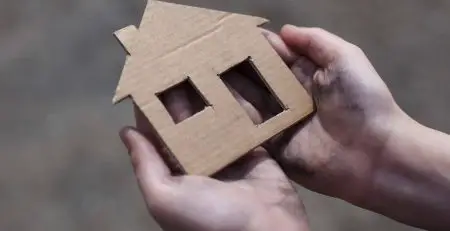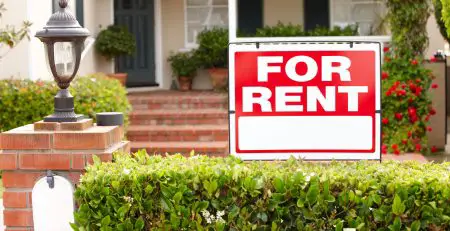Housing is a financial challenge for many American households to manage, especially if these American households do not make enough money. If you are a person (or know a person) that faces financial struggle to afford housing expenses, then you should know there is support available for you. This is where supportive housing plays a role. There are many people who do not even realize that this housing option exists or how it can help their current housing situation. That is why it is important to know what this type of housing is and what you can gain from it. This article will tell you what you need to know about supportive housing, especially its four types and its benefits.
Supportive Housing: A Definition
Before you go in-depth into what you could gain from supportive housing, you should want to know what support housing is and its different types. Individuals that deal with particular situations will require different types of support.
Characteristics of Supportive Housing
There has been evidence of how supportive housing can help people in need. This is because it has qualities and characteristics that can provide assistance to people. These characteristics include the following:
- Long-Lasting and Cost-Efficient
- Access to Public Services
- Highlights on Independence
- Few Requirements to Receive Housing
Long-Lasting and Cost-Efficient
The United States Department of Housing and Urban Development (HUD) states that affordable housing is when a person spends 30% or less of their income on housing costs. This means that tenants of supportive housing will generally spend 30% or less of their earnings towards rent.
Access to Public Services
The main idea of this type of housing assistance is to serve as an option that would provide assistance for individuals to reach long-term stability in housing. This is why people that stay in this supportive housing should have access to necessary public services, such as:
- Public transportation services
- Public Parks
- Grocery stores and supermarkets
- Service provider offices
- Other amenities of the area that other tenants are able to reach
Highlights on Independence
Another aim of supportive housing is to encourage people to gain independence. This means that it highlights the importance of giving people access to achieve self-sufficiency. That would include having the option to come and go as they please and the choice to take responsibility for their daily schedule.
Few Requirements to Receive Housing
When individuals are receiving supportive housing, they can assume that they might not have to worry about strict requirements. This is because individuals that are not in the best situations such as people with criminal backgrounds or bad credit are the target group of supportive housing. Fortunately, that means that there are generally no “blanket bans”, where a certain group of people will be rejected. But, if a person has a history of violence and previous problems in supportive housing, then they might have a hard time receiving this form of housing assistance.
What are The Four Types of Supportive Housing?
With supportive housing, there are several different types that you can come across. Four common types of support housing include:
- Emergency Shelters
- Transitional Shelters
- Rapid Re-Housing (RRH)
- Permanent Supportive Housing (PSH)
Emergency Shelters
When a family finds themselves in the middle of a crisis, that should be one of the first options they should consider. Emergency shelters are housing options that offer individuals and families support services to provide them with short-term housing stability. The amount of time that an individual can stay at a shelter will be based on the shelter’s rules. But, one of the main aims of emergency shelters is to provide assistance to individuals and families that need to locate housing for the time being.
Transitional Shelters
Another supportive housing option is a transitional shelter. Transitional shelters offer temporary housing for people who need it, but for a longer period of time than emergency shelters. Generally, individuals will live in this type of housing between 6 months and 24 months. It is created to provide assistance to people that are dealing with being homeless. One of the main benefits of these types of shelters is that they typically come with supportive services that can provide assistance for people on a personal level, with their careers, and more!
Rapid Re-Housing (RRH)
When people need housing quickly, then this is a great housing option to think about. This is because this type of supportive housing is a “housing first solution”. It is created to provide assistance to individuals that do not generally deal with homelessness, which is known as non-chronic homelessness. Individuals that will gain something from this support can rent a housing unit of their choice, while also benefiting from community support services on a temporary basis. The main aim is to get an individual or household out of homelessness as quickly as possible.
Permanent Supportive Housing (PSH)
Permanent Support Housing is an assistance program that can help people that were chronically homeless before. The United States Department of Housing and Urban Development (HUD) states that someone is chronically homeless if they are a homeless individual that either lives in
- Emergency Shelters (for at least 12 months or at least 4 different times over a 3-year timeline where the accumulated total timeframe amounts to 12 months.)
- Places not fit for human habitation (for at least 12 months or at least 4 different times over a 3-year timeline where the combined time amounts to 12 months.)
- Safe Havens (for at least 12 months or at least 4 different times over a 3-year timeline where the accumulated total timeframe amounts to 12 months.)
- Institutional Care Facilities (for no more than 90 days and lived in any of the options listed above before going into the facility.)
There are many individuals with disabilities that benefit from the Permanent Supportive Housing program. Unfortunately, for many homeless people that have physical or mental disabilities, they require some sort of long-term support to help their situation. PSH offers intensive support services, along with safe and secure housing. Additionally, the PSH program is another type of “housing first solution”, similar to RRH. This program highlights recovery while attempting to help people achieve independence or permanent housing as fast as possible, while also offering supportive services.
What Can You Benefit From Supportive Housing?
There are many things people can benefit from through supportive housing. This is because supportive housing can generally offer services to people who need help. There are three main components that an individual can benefit from, which are:
- Housing Support Services
- Personal Support Services
- Voluntary Services (But, Assertive)
Housing Support Services
People should not be surprised that supportive housing offers housing support services. But, people that get this type of assistance from support of many service providers. Service providers can provide assistance for tenants through:
- Locating for tenants a decent and appropriate place to live that is up to standards
- Providing assistance to residents to create good relationships with their landlord
- Offering education on the resident’s rights and responsibilities as tenants
- Performing an intervention to avoid evictions
Personal Support Services
Service providers can offer a wide range of support to the health needs of people who are in supportive housing. This includes:
- Providing assistance to renters that do not have great mental health and physical health
- Offering support to renters who are abusing substances
- Providing guidance to individuals that are applying for government assistance programs such as Social Security benefits
- Helping tenants with getting employment
Voluntary Services (But, Assertive)
Another benefit is the fact that typically these services are voluntary services. This means renters are not required to take part, if they keep their housing. But, these service providers will follow-up with renters and offer services to tenants, even if renters do not ask for it. This is because renters can gain from the support listed above and service providers are aware of that.
Other Options to Supportive Housing
Other than supportive housing, there are other housing assistance options available for you. There are some options that the Federal Government offers. These options include:
Housing Choice Voucher Program (Section 8)
One of the most popular options is the Section 8 Assistance program. This program is offered by the HUD, but it differs based on the locality. As a matter of fact, local Public Housing Authorities (PHAs) are the agencies that deal with this program. Section 8 can offer housing vouchers that individuals can use towards covering housing costs. The main aim for Section 8 is that tenants should not spend more than 30% of their income on housing expenses. If a household does spend more than 30%, then the HUD considers them as “cost-burdened”.
But, not every landlord accepts vouchers as a type of payment. Even the properties that do allow these vouchers cannot accept renters while the property is in any condition. Properties need to pass inspections that are conducted by your local PHA. This is because the HUD is interested in having all the housing remain in a secure, clean, and livable condition. If you are interested in applying or getting more information on the Section 8 Program, then you should think about contacting your local PHA.
Public Housing
There is another common housing assistance option, which is Public Housing. Local PHAs are also responsible for managing this support option. But, these housing units do not have a private landlord. Your local PHA will serve as the landlord for these housing units. There are three main eligibility requirements that your local PHA will think about when finding out whether you are eligible or not. These four requirements include:
- Income Level
- Family Status
- Eviction History
- Citizenship Status
If you want to apply to this program, then you should consider contacting your local PHA.
The Final Verdict
When individuals are facing homelessness or challenging housing situations, there might be more help than they think. One specific housing opportunity is supportive housing. Supportive housing comes in many types, which includes:
- Emergency Shelters
- Transitional Shelters
- Rapid Re-Housing (RRH)
- Permanent Supportive Housing (PSH)
Each option can help people in a different way. But, some of the benefits that individuals can receive are through service providers that highlight on 3 components:
- Housing Support Services
- Personal Support Services
- Voluntary Services (But Assertive)
Instead of supportive housing, there are other housing support options to think about. Other options to supportive housing are:
- Housing Choice Voucher Program (Section 8)
- Public Housing
If you are interested in getting more information on different housing assistance opportunities, then you can contact your local PHA. They will be able to provide you with the information you need to help your current situation.











